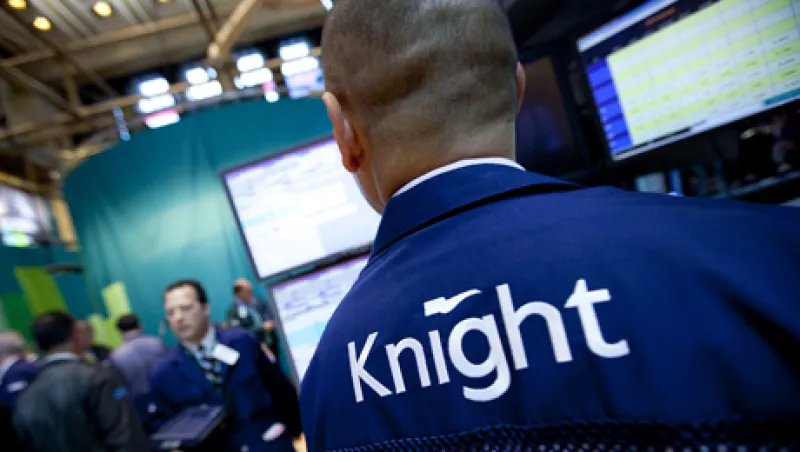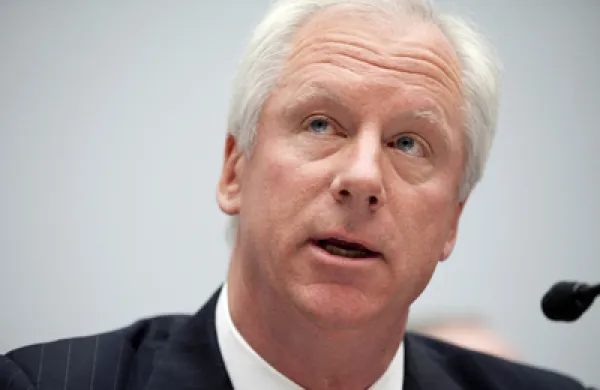In the aftermath of the Knight Capital Group’s technical glitch, a call to introduce formal testing standards for automated and ultrafast trading is taking shape faster than a speeding bullet.
In the United States, a proposal calling for a set of guidelines similar to the ISO 9000 — a series of international guidelines aimed at quality control in the manufacturing industry which has also been applied to a broader range of industries, including the capital markets — for automated and high frequency trading activities was submitted on August 6 to the financial services division of the Washington, D.C.–based American National Standards Institute, which is the U.S.-based division of the International Standards Organization (ISO), a Geneva-based nonprofit that oversees and manages testing standards for products and devices developed by a range of industries.
“Every other mission-critical industry in the world that poses major societal risks — aerospace, chemical, health care and nuclear power — have adopted ISO 9000 standards,” says Ben Van Vliet, an assistant professor of finance at the Stuart School of Business at the Illinois Institute of Technology and one of four authors of the proposal. “Now it’s time in the age of high-speed automation for the trading industry to adopt them as well.”
In addition to Van Vliet, three others have authored “The Rationale for HFT 9000: An ISO 9000-Style Quality Management System for High Frequency Trading.” (To view the proposal, go to htf9000.org.) They are Andrew Kumiega, adjunct professor at the Illinois Institute of Technology; Rick Cooper, assistant professor at the Stuart School; and Jim Northey, of the LaSalle Technology Group and a member of the standards committee for X9.org, ANSI’s financial services division.
Van Vliet says the proposal has also been circulated among members of the Securities Exchange Commission as well as the Commodities Futures Trading Commission.
The proposal calls for the creation of both ethical and technical standards to better control and reduce the risks associated with high frequency trading that the authors define as any automated or algorithmic trading system that enters computer-generated order requests; engages in market making, statistical arbitrage or other trading strategies that employ automated decision-making; and provides liquidity to the marketplace.
The HFT proposal states that each and every high frequency trading firm’s proprietary software systems are a component of a complex, global trading network, and thus any out-of-control or poorly constructed or tested HFT system can potentially flood a market or multiple markets with order requests, resulting in catastrophic effects for all stakeholders. To address these concerns, an ISO 9000–type program would require the establishment of industrywide standards and best practices for the development of automated and algorithmic trading systems, including record-keeping processes for the employment of risk controls, back-testing systems and simulated trading systems. The goal is to help prove the stability or identify the weaknesses of all HFT and automated trading systems.
The HFT 9000 program would also require that firms install and verify safety controls for “kill switches” in the event of a rogue software program or algorithm. The program would also fully test the stability of HFT systems against all manner of extreme market and infrastructure events.
Van Vliet is quick to point out that the program itself would be developed by industry participants, not regulators, and would allow for more consistent auditing of systems by both its users and outside regulators. And although he recognizes that higher costs might be involved, he believes that “employing higher quality standards enhances the bottom line and helps to ensure that you don’t have a $440 million mistake like Knight Capital.” Van Vliet adds that ethical standards are also a critical component of the proposal. “There’s a whole body of academic literature that links ethics and quality management,” Van Vliet says, noting that quality management is the practice of how we ought to do business in order to satisfy obligations to industry stakeholders.
Some industry participants are very wary of the HFT 9000 proposal and its implications. Nanette Boden, CEO of Arcadia, California–based Myricom, a provider of software and infrastructure designed for use by high frequency trading firms, says that she views ISO 9000–type standards as “a poor fit” for the high speed trading industry. “It’s a heavyweight testing standard that would not provide a lot of value and would slow down innovation,” she says.
Instead, Boden says she favors the idea of having trading exchanges step up to offer certification programs for performance and compliance testing to ensure that high speed trading software is truly integrated with their complex systems. “It’s a competitive world out there for exchanges, and they need to play a larger role.”
Others, such as David Mechner, CEO of Pragma Securities, an electronic trading firm focused on algorithmic trading and analysis services, says that the complexity of global trading markets and the constant changes in this arena do not lend themselves well to ISO 9000–type quality standards. “Trading in global markets is not like an engineering application where it’s easy to measure performance characteristics,” Mechner says.
Van Vliet, however, offers another point of view: “If the high frequency trading industry does not do something like this, there is a good chance they will be regulated into oblivion.”





